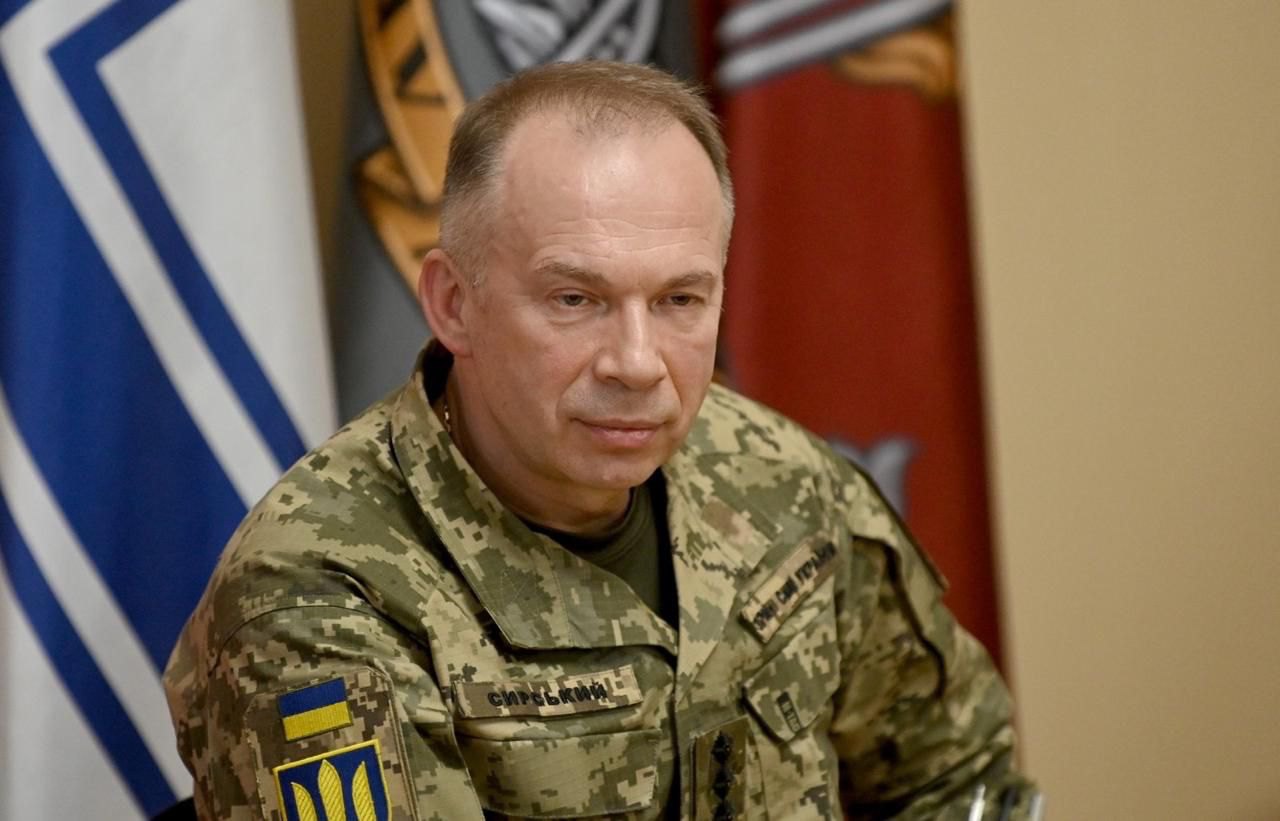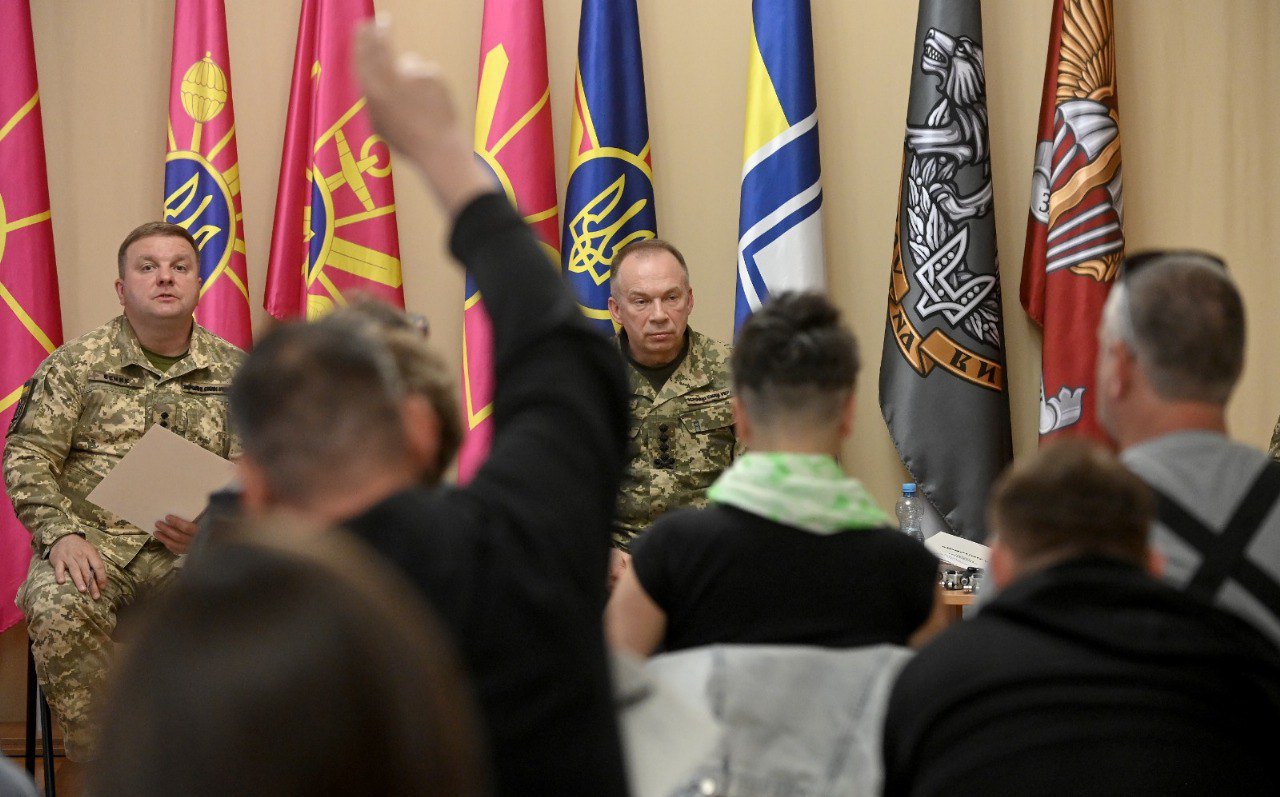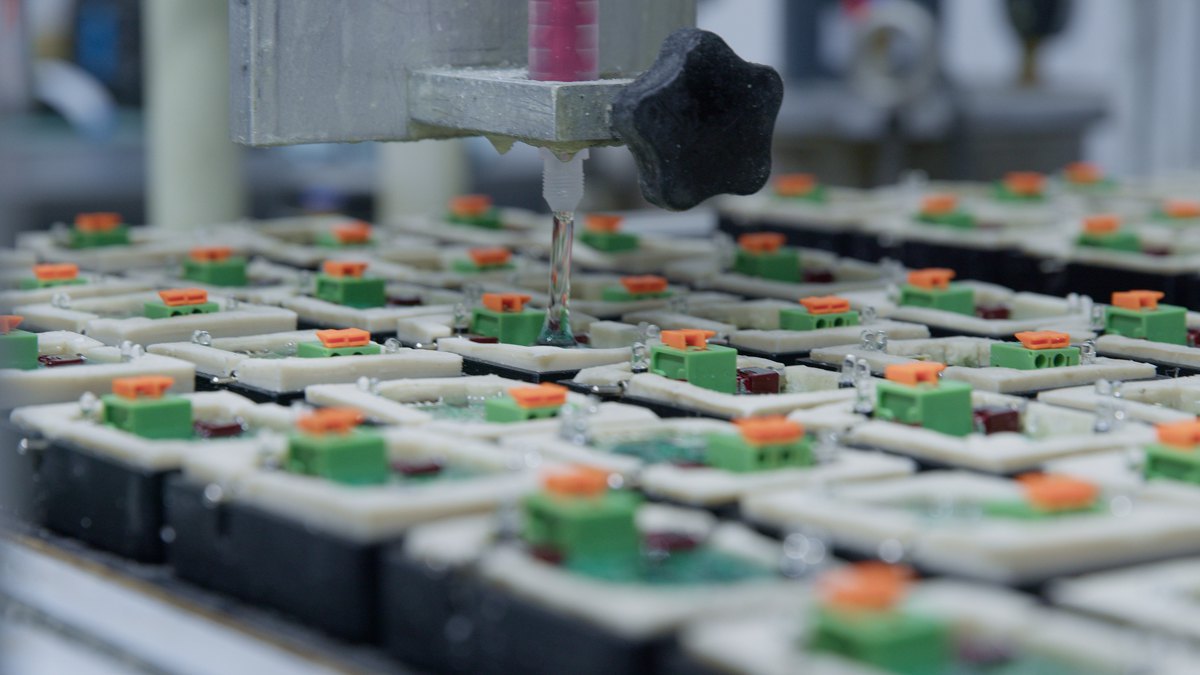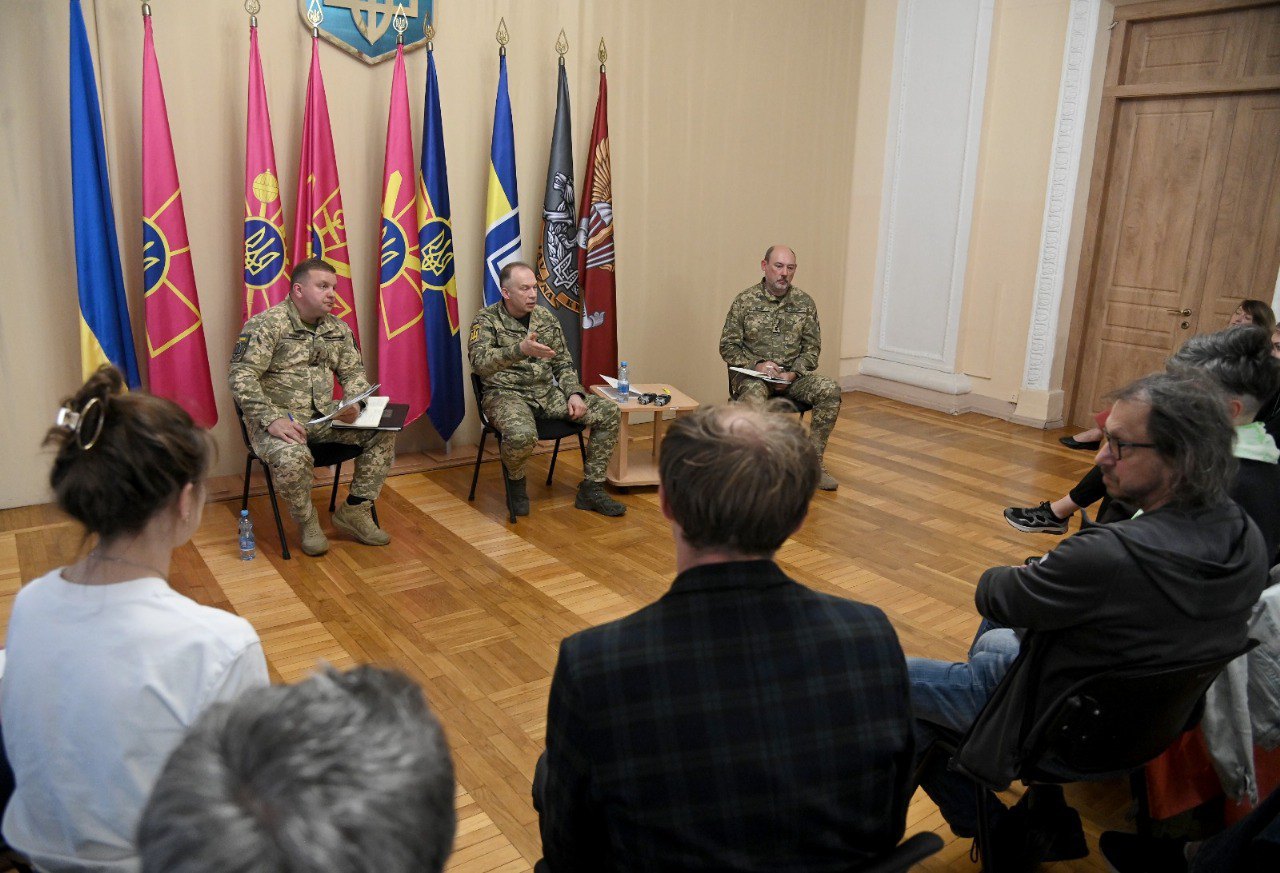
Russia has amassed a group of 50,000 troops in the North Slobozhanskyy direction
You may recall that our Kursk operation drew back almost 63,000 Russian troops, and together with the North Koreans, about 70,000. This allowed us to relieve the enemy’s pressure on the main lines and regroup our troops. Russia’s capture of Pokrovsk, announced in September 2024, has not yet occurred – in part due to our Kursk operation.
In April 2025, Russian units – which, let me remind you again, number around 60,000 personnel (including two air assault divisions, air assault brigades, and marine brigades) – were tasked with relocating to new areas of combat and reinforcing offensive groups in the Pokrovsk, Toretske, Lyman, Zaporizhzhya, and Kherson directions. The aim was to accelerate the enemy’s offensive. However, our active operations in the Glushkovskiy district of the Kursk Region in the Russian Federation disrupted these plans. As a result, these units were not redeployed to other areas. One of the brigades that had already begun moving towards Pokrovsk was returned to the Kursk direction.
Currently, approximately 10,000 Russian troops are fighting in the Glushkovskiy district on Russian territory.
Given this situation, the Russian command has revised its tasks for the grouping of approximately 50,000 troops. Two airborne divisions, four other main brigades of the Russian Armed Forces, the 177th Marine Regiment of the Caspian Flotilla, and several additional units remain concentrated in the North Slobozhanskyy area.
The enemy is conducting offensive operations there, which have been halted along the line between Kindrativka, Andriyivka, Yablunivka, Yunakivka – continuing to the state border and partially crossing into Russian territory. The situation in this area has been stabilised. During this period, we retook and regained control of Andriyivka, and in Yunakivka we advanced 200 to 700 metres within a week.
You know that our group is led by Brigadier General Oleh Apostol, who was appointed Commander of the Air Assault Troops. He is doing a commendable job.
We control about 90 square kilometres of territory in the Glushkovskiy district of the Kursk Region of the Russian Federation – these are our pre-emptive actions in response to a possible enemy offensive.

Occupation army numbers approximately 695,000 personnel in Ukraine
We are aware of our enemy’s capabilities. Over the past year, they have recruited around 440,000 contract soldiers – individuals who joined the war for financial incentives, including high levels of pay and regional allowances. On average, their army is growing by 8,000–9,000 troops each month.
Currently, the Russian occupation army – including its operational reserve – numbers approximately 695,000 personnel on the territory of Ukraine. In addition, they maintain a strategic reserve comprising 13 divisions and a number of regiments and brigades, amounting to a further 121,000 troops. This indicates that they are preparing for a prolonged conflict – a war of attrition. This is their principal strategy: to apply pressure through manpower and exhaust us through sheer mass.
Mobilisation must be conducted in strict compliance with the law and with transparency in the work of recruitment centres
“You know that over the past year, the length of the frontline has increased by 200 km – to approximately 1,200 km. Therefore, the main source of replenishment for our army is the continuation of mobilisation. It is an unpopular measure, but during wartime, no country can avoid mobilisation.
At the same time, I insist that mobilisation must be carried out in strict compliance with the law and with transparency in the work of the Military and Criminal Court.
Mobilisation should not come as a shock to people. All our territorial recruitment centres (TRC) must undergo transformation. The President of Ukraine, the Supreme Commander-in-Chief, has set this task. Inspections are being conducted at the TRCs, and commissions are in operation. We must send those who have not yet fought to the frontline and replace them with wounded soldiers.
The TRCs must fulfil their responsibilities and put an end to the disgraceful incidents that sometimes take place. Corrupt officials and those who violate the law during the mobilisation process must be identified. All necessary measures should be taken against such offenders.”

Transition to corps system proceeds smoothly
As you know, last year we began reorganising the Armed Forces within the context of ongoing combat operations, with the introduction of army corps structures.
The primary aim of this transition to a new organisational model is to enhance the efficiency of our actions and ease the burden on military command and control bodies. The reform reduces the number of command and control elements directly subordinated to a specific body – the army corps – which is now established on a permanent basis.
At the same time, the Operational-strategic group (OSG) level remains in place, while the Operational groupings of troops (OGT) level is gradually being phased out.
What is the current status? The first phase of the army corps headquarters, along with support units, has completed combat coordination and assumed responsibility for their designated areas and corresponding troop groupings. The following phases will see additional corps taking control of their respective areas. In this way, we will complete the transition to the corps system and the corresponding reorganisation of our defence structure.
The focus is on the more effective use of all available forces and resources, optimising artillery distribution, and increasing the number of unmanned systems units.
I expect this reorganisation will, above all, preserve personnel by enabling more rational use of service members directly involved in combat missions. Additionally, it will allow the creation of more capable reserves, enabling us to carry out both active counter-offensive and offensive operations.
The process is ongoing and has progressed with minimal delays. Corps commanders have selected their leadership teams and have been granted the authority to appoint deputies of their choosing.
This has led to a significant rejuvenation of the operational leadership within our wartime military. The vast majority of corps commanders are former brigade commanders who demonstrated distinction on the battlefield. Their deputies and chiefs of staff share similar experience.
We believe that this reorganisation will deliver new opportunities in terms of more effective deployment of units, practical application of combat experience, stronger oversight of brigades, reduced losses, and increased destruction of enemy forces.

On the appointment of a new Unmanned Systems Forces commander and the tasks ahead
As you are aware, a change has taken place. Major Robert Brovdi, formerly the commander of the 414th Unmanned Systems Brigade, has been appointed Commander of the Unmanned Systems Forces. He is a seasoned officer with extensive experience, having progressed through the war as a volunteer, and then as a platoon, company, battalion, regiment, and brigade commander – and now the head of this newly created branch.
He has assumed his duties with intensity and is well respected within the community. I can already see improvements in the unity among commanders, more efficient task execution, and stronger control over implementation.
The new commander is tasked with more effectively developing this modern branch of the Armed Forces – to integrate the advanced units within the Drone Line and the broader Unmanned Systems Forces. As you know, this branch was established precisely for that purpose.
Major Brovdi has committed to ensuring that six or seven units within the Unmanned Systems Forces will rank among the top ten most effective units in terms of enemy elimination using drones. I am confident that he will deliver on this promise.
Ukraine leads in FPV drone numbers, but Russia holds advantage in fibre-optic drone technology
War is a competition of economies – a confrontation driven by scientific and technological progress. At present, the number of FPV drones on our side exceeds the number possessed by the enemy.
We are aware of Russia’s plans and the goals it has set to increase drone production. For example, they have made notable progress in the production of fibre-optic-controlled drones. In this area, unfortunately, they currently have an advantage – both in the quantity of such drones and in their operational range. We already have evidence of fibre-optic drones being flown up to 40 kilometres.
We are now working to close this gap. Several of our domestic manufacturers already produce drones equipped with 20-kilometre fibre-optic cables.

The army of the future must be high-tech. Of course, soldiers will remain present on the battlefield – but their direct exposure will be minimised. Still, the greatest value remains our soldier, our infantryman.
We will do everything possible to protect our infantryman. We want him to control a drone, operate a robotic platform – and only then engage in direct combat, if necessary.
Light aircraft being developed to counter Shahed drones
In our efforts to counter enemy attack drones, we apply the principle of rationality and efficiency across various methods of interception. Given the need to conserve anti-aircraft guided missiles, mobile fire groups (MFGs) remain the primary tool for downing Shahed drones. These units account for the majority of destroyed enemy UAVs. The effectiveness of MFGs currently reaches up to 40 per cent, maintaining their relevance on the battlefield.
One of the most promising areas for combating the Shahed drones is the deployment of light aircraft. We already possess such aircraft and are developing new projects with financial and material assistance from our international partners. This field will continue to evolve. We are receiving modern light aircraft equipped with advanced weaponry and navigation systems, which will improve the effectiveness of our response to Russian attack drones.
Army aviation also plays a vital role in countering the Shahed. Our helicopters are used daily to repel drone attacks. We are expanding this capability. Cooperation has been established with foreign partners – primarily Canadian – allowing us to acquire modern surveillance and targeting systems that significantly enhance the combat effectiveness of our helicopters.

Requirements for fortifications have evolved over the course of the war
The perception of what types of fortifications are effective has changed significantly. At the beginning of the full-scale Russian invasion, large strongpoints and battalion defence areas were constructed. However, as the experience of Bakhmut has demonstrated, such structures have become obsolete in their original form. The Armed Forces transitioned from company-level strongpoints to platoon-level positions. Now, we see that the most effective fortification is designed for a squad at most. These are predominantly clusters of trenches – including so-called “foxholes” – which prevent the enemy from effectively deploying attack drones. Today, a drone – particularly a fibre-optic one – can penetrate virtually any exposed gap.
Naturally, all shelters and defensive structures must now include anti-drone protection. This is a vital requirement. Communication routes must also be concealed to safeguard both our soldiers and unmanned systems operators from enemy strikes.
The evolution of drone technology is directly shaping changes in troop deployment tactics and fortification requirements. In the past, defensive positions were constructed to block enemy advances, including across open terrain where the enemy could deploy numerous armoured vehicles. That approach has now shifted. Current fortifications are typically located near plantations and forest belts, which offer superior camouflage. Minefields, anti-tank ditches, and other obstacles are still actively used. So we are, on the one hand, adapting to technological progress, and on the other, continuing to rely on proven methods.
I must stress that any fortification is only truly effective when it is manned. If a fortification is unoccupied or insufficiently staffed – for example, when a standard strongpoint is defended by only two or three soldiers – it will inevitably fail to serve its purpose.
You are aware that on the frontline, soldiers typically dig in and reinforce their positions themselves, using sapper shovels. The first line of defence is established directly by troops during combat operations. The second line is usually prepared by engineering units of the Armed Forces and the State Special Transport Service, working in cooperation with civilian organisations. The third, capital line is constructed by Regional Military Administrations. There remain numerous concerns regarding the quality – or lack thereof – of these fortifications.

DeepStrike operations will continue to grow in scale and reach
What proves effective for us? DeepStrike. This is arguably one of our strongest capabilities – with an effectiveness ratio up to 15 times greater than the cost per strike.
Recall how, during negotiations, the enemy requested that we cease attacks on their oil refining infrastructure. This alone demonstrates the effectiveness of our operations.
Naturally, we will continue DeepStrike attacks on Russian territory. We will expand their scale and depth. It is important to emphasise that we are not targeting the civilian population – our strikes are aimed exclusively at military objectives.
We will not remain in a passive defence – we strike where the enemy is vulnerable
Regarding our strategic plans and intentions, we will not remain in passive or dead-end defence. This approach brings no advantage and ultimately results in retreat, loss of personnel, and loss of territory.
That is why we are combining defensive actions with active defence and offensive operations. Wherever possible, we strike at the enemy and conduct counterattacks. We attack where we identify weaknesses in their defensive lines.
To this end, we have created and are continuing to expand assault troops. These include separate units and regiments that were initially formed at the start of the Kursk operation and are now engaged across virtually all the most challenging sectors of the frontline – both where we can advance and where the enemy has had success and must be repelled, including the retaking of settlements. Such was the case in the Sumy Region.
We have plans to expand these units. Much depends on how effectively we can implement the required structural changes.









